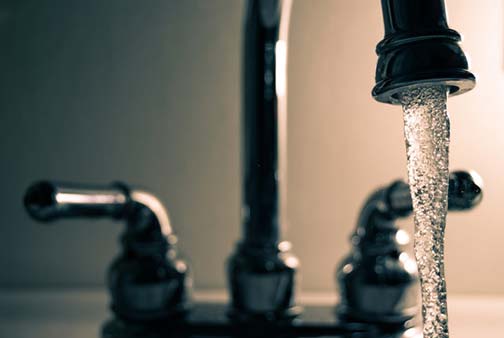How to Turn off the Water for Plumbing Repairs – There are several reasons why you may want to turn off the water supply to your home. Maybe you are about to leave town and don’t want to leave the water on. Or you are testing the shut-off valve. Or, the most common reason, is that you have a plumbing emergency.
Whatever your reason for wanting to turn off your water, you have to actually know where the shut-off valve is and how to use it before you can stop the water supply to your house, says Stringer Management. This post shows you how to turn off your home’s water supply before doing plumbing repairs.
There are two ways to turn off the water supply to your home. You may shut off the supply to the entire home by turning it off at the mains. Or you can cut off the supply to specific appliances or your water heater. The right method depends on your reason for shutting the water supply.
How to turn off the water at the main shut-off valve
The first step is to locate the main shut-off valve for your home. Its location depends on the age of your home and the climate in your location. You may have to look around your property to find it. The three places where you will often find the shut-off valve are:
Inside the house
Areas inside the home where the shut-off valve is often located are the basement, garage, laundry room, or exterior wall facing the street. In many homes, it is near the water heater. A shut-off valve inside the basement will often be at eye level. If it is on the main floor of the home, expect it to be positioned lower.
Outside on an exterior wall
If the climate in your region is relatively warm, the shut-off valve could be located outside the house. You will often find it sticking from the lower part of an exterior wall. Start your search in the areas near the outdoor faucet.
Close to the street
In some areas, the shut-off valve will be located in the same place as your water meter. You may find a fixture near the street and below the ground, with two shut-off valves on opposite sides. The street-facing valve is for the city’s use. The other valve facing your home is what you are looking for. Do not touch the valve until you verify that it is indeed the main shut-off valve for your home.
Now that you have found the main shut-off valve for your property the next step is to actually turn it off. How you turn off the valve depends on the type of valve your home has. The most common types are:
Ball valves: These have a lever handle. When the valve is open the handle lines up with the pipe. To shut it off you turn the lever until it is at a 90-degree angle to the pipe.
Gate valves: These have a circular handle. To shut this off turn the circular handle in a clockwise direction until it stops moving.
Note that since your main shut-off valve is rarely used, it might be stiff, and you will need to exert effort to get the valve handle or lever to move. Also, some homes have branch valves near the main shut-off valve; these let you cut off the water supply to selected areas of the home.
After shutting the valve, drain any water inside your home’s supply pipes. To do this, open the lowest faucet in the house as well as the highest one. This step helps you avoid flooding when you eventually start your repairs. You may also use this step to verify that the water supply is indeed terminated.
How to turn off the water supply at the water heater
If your hot water pipe is leaking or you want to replace or repair your water heater, there is no need to shut off the water supply to the entire home. You can easily prevent cold water from getting into the water heater or hot water from leaving the water heater in the home.
Your water heater has two valves; a blue one to control cold water supply and a red one to control hot water. If your hot water pipe is leaking and you need to fix it, shut the red valve. On the other hand, if you are trying to repair or replace a water heater, close the blue valve.
How to turn off the water supply for appliances
If the problem is with a dishwasher, washing machine, or any water-utilizing appliance, you can turn off the water supply to that appliance alone. You may also shut down the water supply to a specific plumbing fixture in the home, dripping faucet, or running toilet.
For sinks, toilets, and showers, you will usually find their shut-off valve close to the fixture. Dishwashers, washing machines, and refrigerators will have the shut-off valve mounted on a water supply tube or a wall close to the appliance.

[…] when dealing with a burst or leaking water line. Perform this step before addressing the problem. Shutting your home’s water supply after you detect a leaking or burst pipe will help you minimize the […]
[…] any plumbing emergency, step one it’s best to take is to shut off the water provide to your own home. This may also help forestall additional water harm and flooding. Find the principle shut-off […]